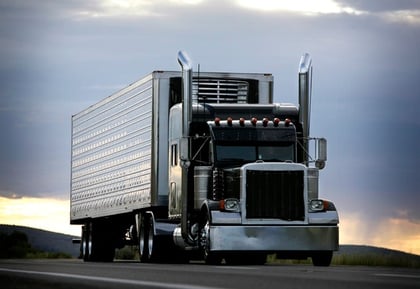 A road trip just wouldn't be the same without the open road, the roadsides stands, and the long haul truckers that share the road. Or would it? The rise of automated vehicles may result in more room on the roads and less character in roadside diners. Self-driving vehicles are sweeping headlines with heavyweights like Google and Tesla getting in on the fun. For the transportation industry, robotic vehicles offer a whole new way of doing business. Robotics are changing the transportation industry and these are just four areas that transportation employers will need to address to keep up with these changes.
A road trip just wouldn't be the same without the open road, the roadsides stands, and the long haul truckers that share the road. Or would it? The rise of automated vehicles may result in more room on the roads and less character in roadside diners. Self-driving vehicles are sweeping headlines with heavyweights like Google and Tesla getting in on the fun. For the transportation industry, robotic vehicles offer a whole new way of doing business. Robotics are changing the transportation industry and these are just four areas that transportation employers will need to address to keep up with these changes.
Lower Costs
No matter the industry, cost is always a factor. With transportation, cost can be a tricky subject. Not only is there the inherent labor costs but also insurance, fuel, maintenance, and storage. While some of these costs are inevitable, with robotics many can be reduced or eliminated. The first is labor. Robotic trucks can reduce the amount of staff needed to drive vehicles and also significantly reduce insurance costs. With more time spent on the road and moving product, storage will be another area where robotics will reduce costs. By dramatically changing and reducing the costs associated with transportation, those in the industry will need to plan ahead and reassess quickly to distribute resources for the most profit.
Faster Delivery
Today's drivers need their rest – and rightfully so. Labor departments have strict requirements for when drivers need to sleep and be off the road. While this is necessary for the driver, it stalls business and delivery time. Robotics will allow the transportation industry to deliver goods more efficiently and quickly. Rather than having hours of time on the side of the road, deliveries can be near-continuous with stops only for fuel and maintenance. This increase in driving time will allow for less trucks on the road with faster overall delivery time.
Expanded Access
While transportation has come a long way, there are still parts of the country and the world that have minimal access to outside goods. Whether it's because of dangerous roads or low population, the shift to robotic drivers will also pave the way for more access to these areas. Rather than transportation businesses being required to risk driver safety and company profit to reach these areas, robotic drivers will be able to incorporate more stops into their route and will not be as restricted by difficult weather conditions.
Safer Roads
The cost of safety isn't far from the forefront of the transportation industry's mind. With 33,000 lives lost annually on the roads and over one million injuries, part of the allure of self-driving trucks isn't just lower costs but safer roads. Autonomous cars are engineered with safety in mind, reducing accidents and scheduling runs for times with low traffic. This will not only decrease insurance costs for transportation businesses but also reduce litigation and loss of life on the roads, which is a win for everyone.
Robotics are shaping the future of transportation both commercially and publicly. As automated vehicles begin taking over the roads, those in the transportation industry will need to adjust their way of doing business to keep up with the technology.
